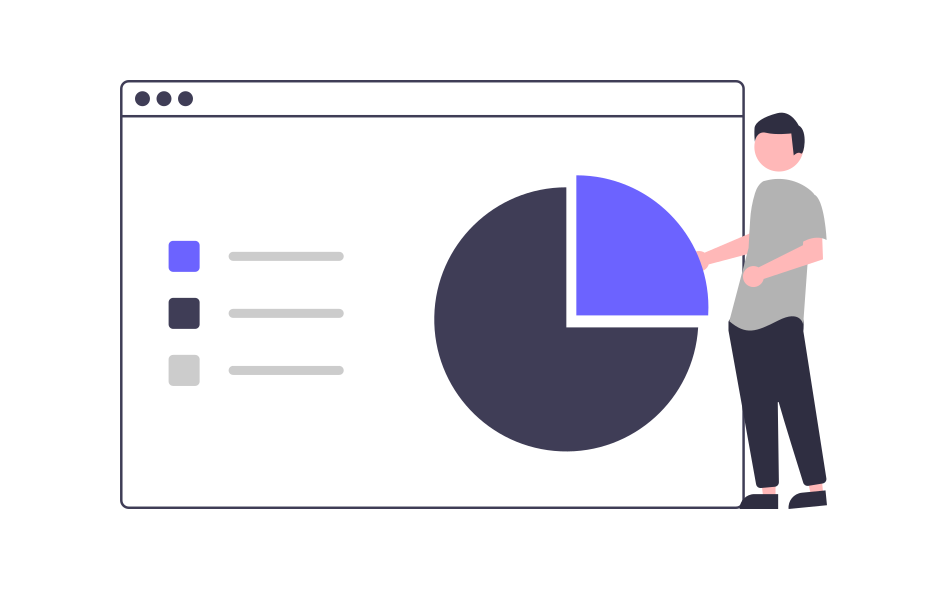In the ever-evolving landscape of B2B marketing, businesses are continually seeking innovative ways to enhance their marketing strategies and achieve better results. One powerful approach that has gained significant traction is the integration of B2B customer segmentation with account-based marketing (ABM). This combination allows marketers to deliver highly targeted and personalized campaigns, driving increased engagement and revenue growth.
Understanding B2B Customer Segmentation
Customer segmentation involves dividing a broad customer base into smaller groups based on specific criteria such as industry, company size, geographic location, and behavioral characteristics. By doing so, businesses can tailor their marketing efforts to address the unique needs and preferences of each segment.
Effective B2B customer segmentation typically involves:
- Demographic Segmentation: Categorizing customers based on company size, industry, location, and other demographic factors.
- Firmographic Segmentation: Focusing on characteristics such as revenue, number of employees, and business model.
- Behavioral Segmentation: Analyzing customer behavior, including purchase history, website interactions, and engagement levels.
- Needs-Based Segmentation: Identifying customers based on their specific needs and pain points.
The Power of Account-Based Marketing (ABM)
Account-based marketing is a strategic approach that focuses on targeting high-value accounts rather than casting a wide net to attract a broad audience. ABM aligns marketing and sales efforts to create personalized campaigns for individual accounts, often involving multiple stakeholders within each target organization.
Key benefits of ABM include:
- Personalization: Crafting highly customized content and messaging for each account to address their unique challenges and objectives.
- Alignment: Ensuring close collaboration between marketing and sales teams to drive consistent and effective communication with target accounts.
- Efficiency: Concentrating resources on high-potential accounts, maximizing the return on investment (ROI).
- Measurement: Tracking the impact of marketing efforts on specific accounts, allowing for more accurate attribution and analysis.
Integrating Customer Segmentation with ABM
Combining B2B customer segmentation with ABM creates a powerful synergy that can significantly enhance marketing effectiveness. Here’s how these two strategies can be integrated:
1. Identifying High-Value Segments
Begin by analyzing your customer base to identify high-value segments that align with your business goals. These segments should represent accounts with the greatest potential for revenue growth and long-term partnerships. Utilize firmographic, demographic, and behavioral data to pinpoint these key segments.
2. Developing Targeted Campaigns
Once high-value segments are identified, develop targeted ABM campaigns tailored to the specific needs and characteristics of each segment. Craft personalized content, offers, and messaging that resonate with the unique challenges and goals of these accounts. This level of customization fosters deeper engagement and builds stronger relationships with key stakeholders.
3. Aligning Marketing and Sales
Ensure that your marketing and sales teams are aligned and working collaboratively to execute ABM campaigns. This involves sharing insights, strategies, and feedback to create a seamless experience for target accounts. Regular communication and joint planning sessions can help maintain alignment and drive campaign success.
4. Leveraging Data and Insights
Utilize data and analytics to continuously monitor and optimize your ABM efforts. Track engagement metrics, conversion rates, and other key performance indicators (KPIs) to assess the effectiveness of your campaigns. Use these insights to refine your segmentation and ABM strategies, ensuring ongoing improvement and adaptation.
5. Personalizing Customer Interactions
Personalization is at the core of successful ABM. Leverage customer segmentation data to tailor every interaction with your target accounts. From personalized email campaigns to customized landing pages and content offers, ensure that every touchpoint reflects the unique needs and preferences of each account.
The Benefits of Integration
Integrating B2B customer segmentation with ABM offers several significant benefits:
- Enhanced Targeting: By focusing on high-value segments, businesses can allocate resources more effectively and achieve better results.
- Improved Engagement: Personalized and relevant content drives higher engagement levels and fosters stronger relationships with key accounts.
- Increased ROI: Concentrating efforts on high-potential accounts maximizes the return on marketing investments.
- Better Alignment: Collaboration between marketing and sales teams ensures a consistent and cohesive approach to targeting and nurturing key accounts.
- Data-Driven Decisions: Leveraging data and analytics enables continuous optimization and refinement of marketing strategies.
Conclusion
Integrating B2B customer segmentation with account-based marketing is a strategic approach that can significantly enhance your marketing efforts and drive revenue growth. By identifying high-value segments, developing targeted campaigns, and aligning marketing and sales teams, businesses can deliver personalized experiences that resonate with key accounts. Leveraging data and insights ensures ongoing optimization and success in the ever-competitive B2B landscape.


